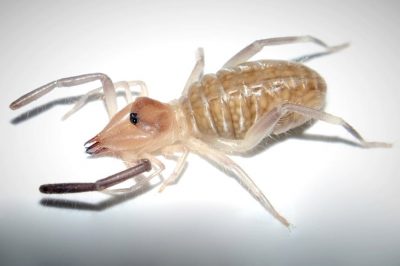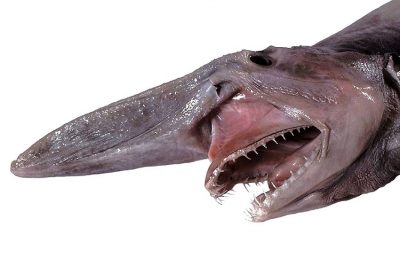Maned Wolf: The Existential Crisis of Chrysocyon – the Golden Dog That Looks Like a Fox
Share

Maned wolf. (Max Pixel)
Listed as near threatened, the maned Wolf (Chrysocyon brachyurus) a carnivore of Canidae family is found in the forests and grasslands of Southern America, Argentina, Brazil, Bolivia, Paraguay, and Peru. It does have a mane but doesn’t look like a wolf. A fox look- alike, it isn’t a fox either. It is a unique creature, just one surviving species of the genus Chrysocyon.

The maned wolf is also known for its disproportionately looking long legs. (Tambako The Jaguar / Flickr)
Their uniqueness is a mixed blessing
A healthy adult can weigh between 20-25 Kg and measure 3 feet high in standing position, the animal has thick red skin loosely attached to the body frame. Long black hair on the nape and back make for a waving hair tuft, hence the name maned wolf. The hair on other parts of the body range from red, yellowish to brown, giving an overall impression of golden colour. Genus Chrysocyon, in the Greek language, means a golden-dog.

A maned wolf at Beardsley Zoo. (Sage Ross / Wikipedia Commons)
Raising of hair gives puffy plumpness to the animal and helps it scare the enemy in crisis situations. Ironically, being the largest sized animal of the Canidae family makes it stand-out and hounded by other members of the family like jackals and stray dogs. Genetic studies have shown that mane wolf descended from a large-bodied mammal the ice age.
Diet of the maned wolf
Maned wolf has a shorttail. The species name brachyurus means ‘short tail’. It measures 25-45 cm and is white-haired towards the distal end. White colour is also around chin and muzzle. A denture is a mix of carnivore and herbivore pattern; sharp canines of the carnivores and flat grinding molars of the herbivores. Animal, thus, is omnivorous. Half of its food intake is animal flesh and other half is fruits and vegetables. It preys on reptiles, small animals and birds- including poultry. It moves cautiously in the long grass and then pounces on prey with agility. A few bites later the prey is swallowed down. Lobeira, an apple-like fruit is animal’s staple food. This fruit also protects it from the kidney worms. Other vegetarian picks include sugarcane, roots, and fruits available in the habitat.

Lobeira, also known as wolf’s plant. (Evaldo Resende / Wikimedia Commons)
Demarcates its living range with excreta-stench
The animal lives solo or in monogamous pairs in about 10 square mile area of its natural habitat. The habitat is open grasslands with or without a sprinkle of trees and bushes. They also thrive well near swamp, rivers and forests. A peculiar stench of their urine and faeces demarcates their territorial holding. Based on the sharp smell of excreta, the other name for the animal is “skunk wolf”. The home-area of the living range is zealously guarded against intruders. They don’t howl like wolves, nor live in packs, but bark loudly to communicate with fellow animals and warn others to keep off their dominion zone. They have sharp ears which can rotate on base to catch sounds coming from different directions.
Good jumper and dodger, but a bad runner
Maned wolf has a peculiar wobbly gait. As it moves, the bodyweight is borne on two legs of the same side. The other two legs move together to create forward motion. Like the undulating move of a giraffe. In full gallop, the stilt-like hind legs are pushed clear ahead of the forelegs. Peculiar configuration of legs enables the animal to jump high and long in a jiffy. However, it is not a good runner and doesn’t chase its prey. Rather, it beguiles and shocks the target with a sudden move. Being a poor runner in a straight line, it is easily hunted down by its enemies. Generally, it gets along well with other species of the habitat. It is shy facing a man, who it would avoid at all cost. The animal has an average life expectancy of about 6.5 years with a maximum lifespan reaching up to 12-15 years.
Killed by man for medicine and mental peace
What has made this docile life near-threatened? One is human greed. Many believe body parts of maned wolf can be used as medicines as well as a good-luck charm. Then, many believe, falsely of course, that they harm their domestic livestock. These assumptions led to their wanton killing. The animal’s inability to reproduce fast and plentifully is another drag. Females have just one oestrus (heat period in which it allows male to mount for sexual reproduction) which lasts for about 5 days. One to five number of babies are delivered after a gestation period of 65 days. Thus one pregnancy adds an average of only 2.5 young ones to the population. Both the male and the female take care of their young ones. After one month of suckling, the newborn live off the food regurgitated from the mother’s mouth.

Young maned wolf playing. (Tambako The Jaguar / Flickr)
Paul Hawken rightly said that whereas the biological diversity is messy and noisy, extinction is silent. The only voice against extinction can be the human voice. And it ought to be raised for this lone surviving species of the golden-dog genus.
Enjoyed this article? You would also love “Hoatzin Reptile Bird: A Dinosaur-Like Bird with the Digestive System of a Cow“.
Special thanks to Tambako The Jaguar for releasing the photos of the maned wolf in creative commons.
Fact Analysis:
STSTW Media strives to deliver accurate information through careful research. However, things can go wrong. If you find the above article inaccurate or biased, please let us know at [email protected]













